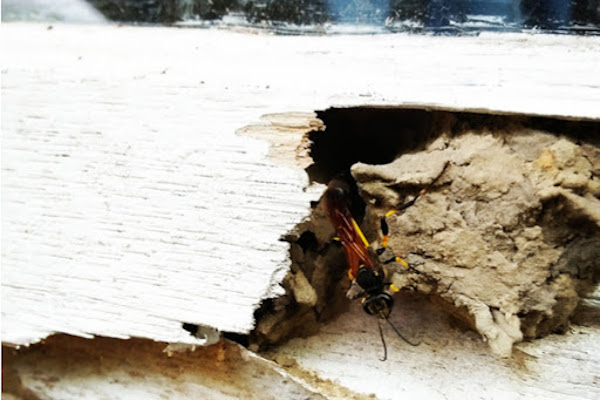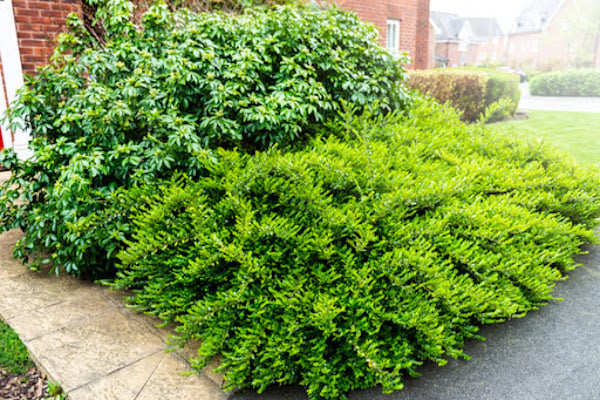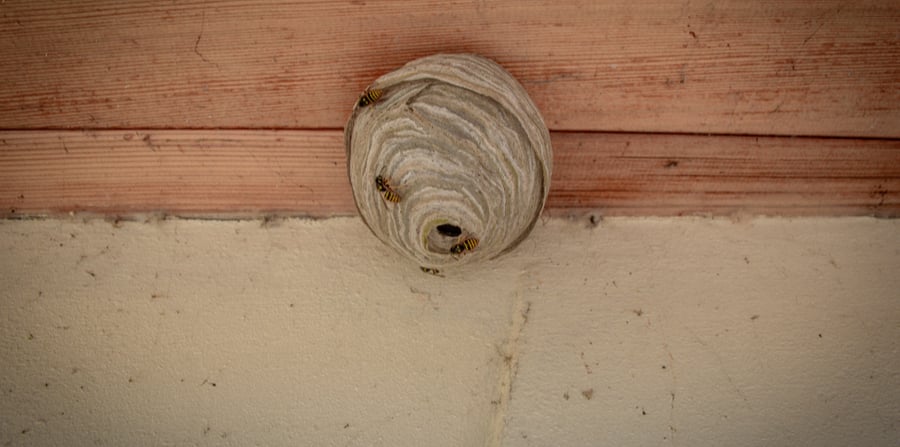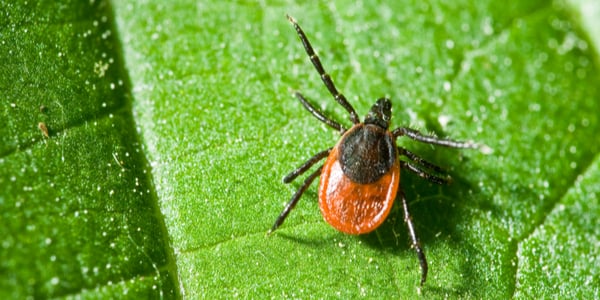Wasps build their nests in dark, sheltered, and warm places where they can easily access food. Keep them away by sealing up crevices around your home and making sure wasps can’t eat your garbage. You should also block off any shady, hard-to-reach shelters like your chimneys, vents, or porches.
Protect your garbage
Unlike honey or bumblebees, wasps don’t subsist on nectar. Instead, wasps are opportunistic hunter-foragers. Basically, that means they eat whatever they can find. They’re particularly attracted to proteins (especially in spring and summer) and simple sugars (especially in summer and fall). The best place for wasps to find reliable sources of both food sources is often people’s dumpsters. If wasps can find the food they’re looking for in your dumpster consistently, they’ll take up permanent residence nearby.
Wasps will eat nearly anything you throw out, especially meat and soda. Wasps return to the same feeding site continuously for as long as they can. Preventing wasps from using your dumpster as a feeding ground is the best way to keep them away. To do that, make your garbage as unappealing and inaccessible as possible. Rinse out beverage containers before recycling them. Store all garbage in sealed plastic garbage bags. Clean your dumpster regularly to prevent residue build-up. Consider tying down your dumpster lid when you aren’t using it.

Patch up cracks and gaps
Eusocial wasps build nests out of regurgitated wood fibers. They “paste” this wood material onto nearby existing structures, which act as supports. Wasps can even hang their nests vertically from ceilings and awnings. When wasps look for supports to build their nests onto, they look for secluded and sheltered places. In the “wild,” they often build in logs, tree hollows, high tree branches, or under stones. They might also build around your home!
When wasps build nests around you, it’s because they’ve found an ideal spot. It’ll be shady but warm, at least partially covered, and difficult for predators to access. You can keep wasps from building near you by cutting off as many good building sites as possible. Block off any gaps around siding and roofing that would provide a good natural build site for wasps. Invest in screens for your vents and chimneys. The trick is to give wasps as little cover to work with as possible.
Block off decks and porches
When you picture wasp nests, you probably picture them hanging off high rooftops or tree branches. The only real reason wasps build nests high up is to keep their nests inaccessible and safe. If wasps can find warm, covered, and dark nest sites close to the ground, they’ll absolutely use them. In fact, spaces beneath decks, porches, and sheds are perfect for wasps. They may build into the corners of the underside of a deck or build out of the ground.
Starting with your deck and porch, look for places where wasps might find easily accessible shelter. If you don’t have any fencing installed between the underside of your deck and the ground, we recommend adding some. Look for damage or hollowed-out openings around your shed or porch, too. Any opening beneath a structure makes for a perfect wasp’s nest. We also recommend clearing an area around your deck or porches to make them less attractive as hiding places. Speaking of:

Clear the clutter
We’ve driven this point home before: wasps are all about shelter. They want to live in places where they can eat and nest at minimal risk to themselves. Believe it or not: they don’t want to sting you any more than you want to be stung. They’re attracted to places where they can remain in shade and cover because it makes them feel safer. The more hiding places they can move between, the more comfortable they feel.
You don’t want wasps feeling too comfortable around your home. To avoid that, try to give them as few hiding places as possible. Trim down bushes and shrubs, especially near the perimeter of your home, deck, porch, and shed. Keep your grass trimmed short, and weed your lawn as frequently as possible. Pick up fallen twigs and other debris regularly to prevent clutter from building up. The more exposed wasps feel, the less likely they’ll be to approach your home and make nests around you.
Wasp’s nests are disruptive, upsetting, and just plain scary. Wasps are at their most aggressive (and dangerous) when they’re defending their homes. If a wasp makes your home its home, it puts you and your family at risk. Luckily, by following these tips, you can make your property as unattractive to wasps as possible.If you do end up with a wasp’s nest around your home, don’t panic! Just call Plunkett’s Pest Control ASAP. Our experts can remove the nest safely and effectively. We’ll even help you make sure the wasps don’t come back!








